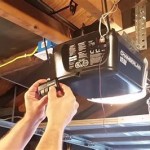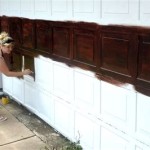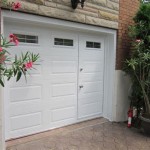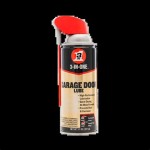Bottom Rubber for Garage Door: Essential Aspects
A garage door is a crucial component of any home, providing security, protection from the elements, and convenience. The bottom rubber of the garage door plays a vital role in ensuring its optimal functionality and longevity.
Purpose of Bottom Rubber
The bottom rubber, also known as the weatherstripping or seal, serves several essential purposes:
- Prevents Water and Air Infiltration: The rubber creates a tight seal between the door and the floor, preventing water, rain, snow, and wind from entering the garage.
- Insulates and Energy Efficiency: The rubber acts as a barrier against heat loss and drafts, improving the garage's energy efficiency and reducing heating and cooling costs.
- Reduces Noise: The rubber absorbs vibrations and noise from the garage door opening and closing, creating a quieter environment.
- Protects the Door: The rubber prevents debris, dirt, and small objects from entering the garage, extending the door's lifespan.
- Prevents Ice Buildup: In colder climates, the rubber creates a barrier that prevents ice buildup on the bottom of the door, ensuring smooth operation.
Types of Bottom Rubber
There are various types of bottom rubber available, each with its unique properties and benefits:
- EPDM Rubber: Durable, weather-resistant, and flexible. Suitable for all climates.
- Neoprene Rubber: Highly resistant to oil, gasoline, and chemicals. Ideal for garages where vehicles are stored.
- Vinyl Rubber: Economical, pliable, and easy to install. Recommended for moderate climates.
- Thermoplastic Rubber (TPR): Kombiniert die Vorteile von Gummi und Kunststoff. Dehnbar, langlebig und witterungsbeständig.
Choosing the Right Bottom Rubber
When selecting a bottom rubber for your garage door, consider the following factors:
- Climate: Opt for weather-resistant rubber if you live in extreme temperatures or regions with heavy rainfall or snowfall.
- Garage Use: If you store vehicles or potentially hazardous materials in your garage, choose an oil- and chemical-resistant rubber.
- Height of Gap: Measure the gap between the door and the floor to determine the required thickness of the rubber.
- Durability: Choose a durable rubber that can withstand repeated opening and closing of the door.
Installation and Maintenance
Proper installation and maintenance are crucial for the optimal performance of bottom rubber:
- Installation: Clean the surface of the door and floor before applying the rubber. Follow the manufacturer's instructions for proper adhesion.
- Maintenance: Regularly inspect the rubber for any damage or deterioration. Clean it with soap and water to remove dirt and debris.
- Replacement: Replace worn or damaged rubber promptly to maintain the door's efficiency and integrity.
Conclusion
The bottom rubber of a garage door is an essential component that contributes to the door's functionality, energy efficiency, and protection. By understanding the purpose, types, and installation requirements of bottom rubber, you can make informed decisions to ensure your garage door operates smoothly and effectively for years to come.

Reviews For Frost King 16 Ft Garage Door Bottom Seal Kit 2 1 4 In Pg The Home

2 In X 16 Ft Black Rubber Replacement For Garage Door Weatherstripping

Epdm Rubber Garage Door Bottom Kit Frost King Weatherization Products

1 5 8 In X 9 Ft Aluminum And Vinyl Garage Door Bottom

4 Black 1 T Style Heavy Duty Rubber Bottom Garage Door Seal Raynor

Showingo For Clopay Garage Door Rubber Bottom Weather Seal 20ft

Skyshalo Garage Door Seals Bottom Rubber Weather Stripping Kit Seal Strip Replacement Universal Weatherproof Threshold Buffering Sealing 16ft

Reviews For Action Industries Rodent Block Garage Door Bottom Seal Kit With 1 3 8 In Aluminum Retainer And Epdm Rubber Single Car Pg 2 The Home

M D 03749 Bottom Garage Door Sealer 2 In W 1 Thick 16 Ft L Epdm Rubber Black B Supply

3 Black 1 4 T Style Heavy Duty Rubber Bottom Garage Door Seal Raynor
See Also








